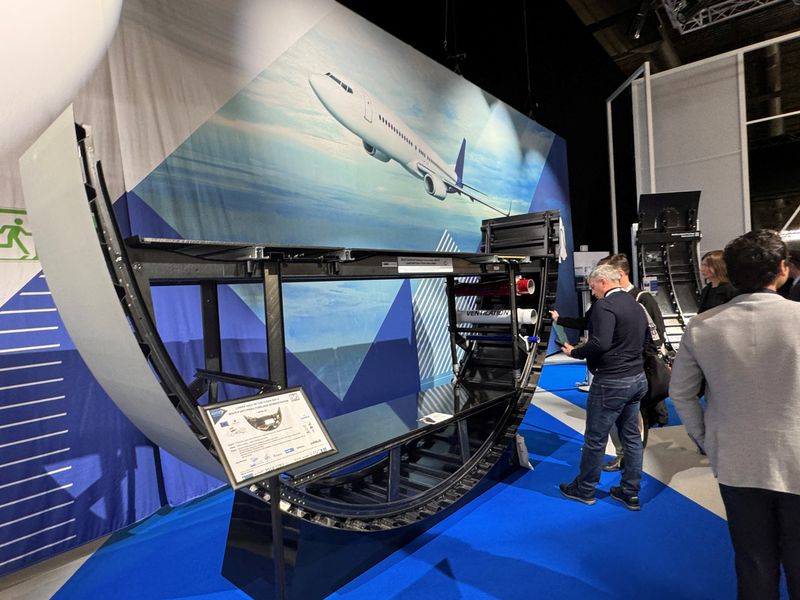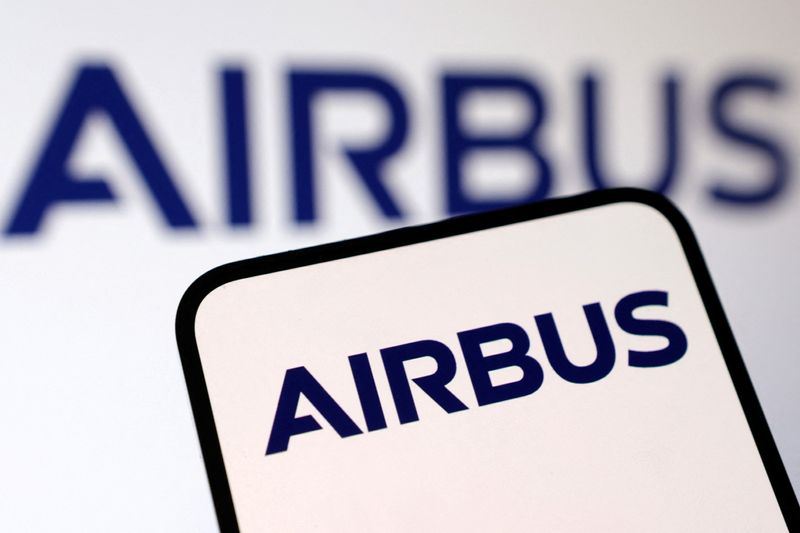
By Tim Hepher
PARIS () - Airbus and Boeing are preparing the aerospace industry for sharp increases in output of the next generation of workhorse jets to some 100 a month each, as they explore lighter plastic materials and robotic assembly, industry sources said.

Facing weak supply chains and a potentially lengthy wait for future engine developments, the world's two largest planemakers are years away from launching projects to replace their decades-old Boeing 737 and Airbus A320 series, which remain in demand.
But both told a packed technical audience at a Paris composites fair this month that they were already making progress in researching what the succeeding generation of models could be made of - and in turn how fast they could be built.
"The goal is to recommend the best approach to transition...(to) the next airplane programme," Randy Wilkerson, who represents Boeing in a NASA research project for high-capacity manufacturing called HiCAM, told the JEC World conference in Paris.
The airplanes that future models would replace are built of aluminium under methods perfected over decades. But composites are being considered for their lighter weight and flowing shape.
Already heavily used on larger jets like the Boeing 787 and Airbus A350, composites save fuel and emissions but currently need time-consuming handling in pressurised autoclave ovens.
To meet the demand for much larger numbers of small jets, both planemakers are increasingly studying manufacturing based on novel materials like thermoplastics at faster speeds.
Speakers said ongoing studies assume future production of 80 jets a month each for Airbus and Boeing: more than twice what Boeing is producing now, following a safety crisis, and higher than Airbus' repeatedly delayed target of 75 a month.
However, sources told that both planemakers are telling the composites industry they want to go even further and be ready for speeds as high as 100 a month each, a blistering pace equivalent to one roughly 200-seat jet every few hours.
Boeing and Airbus declined to comment.
THERMOPLASTICS
It's a major gamble for an industry that first used composites in the 1970s but never at such ambitious rates.
Analysts say production capacity will be as important a battleground in tomorrow's jet industry as picking the right designs, as the West faces rising competition from China.
Until now structural parts for jets like the 787 have been made of a type of composite known as thermoset, which maintains its shape and toughness once cured in autoclaves.
Possible future techniques include an evolution of the existing production system with faster curing times. "It's a lower risk approach but has a lot of potential," Wilkerson said.
Also in the mix is resin infusion - a technique typically used to make boats but which could be used to make automated production of some components without needing an autoclave.
But increasingly, thermoplastics are causing a buzz in aerospace, according to delegates at the world's largest composites event, where Airbus, GKN and others showcased part of the world's largest thermoplastic fuselage structure.
The advantage of thermoplastic is that it can be reheated and remoulded to produce a single, flowing aerodynamic shape.
"You can melt it and reshape it in any way you like," said Lukas Raps of German Aerospace Centre DLR.
Such parts can also be welded using advanced methods like ultrasound rather than attached with rivets, reducing weight.
And they are less likely to need autoclaves - a major time and energy saving when contemplating large output increases.
"Without a doubt, thermoplastic materials provide us with opportunities that we lack when working with thermosets," said York Roth, a prominent researcher at Airbus in Germany, during his address at the conference.
Shifting from using physical titanium fasteners to welding on structural components might encounter certification challenges.
Industry experts suggest that the following aircraft may incorporate a blend of methodologies instead of solely relying on a single technology.
Although aerospace is a comparatively minor participant in composites, it exerts influence beyond its size when it comes to monetary worth and research capabilities.
Officials emphasized that there were currently no imminent plans for introducing a new aircraft model, which experts suggest could potentially concern fatigued investors amid ongoing supply chain issues and instability at Boeing.
"This demonstrator was not intended for flight, but it has been proven effective for maximising learning," Roth informed the attendees.
(Reporting by Tim Hepher; Editing by Susan Fenton)